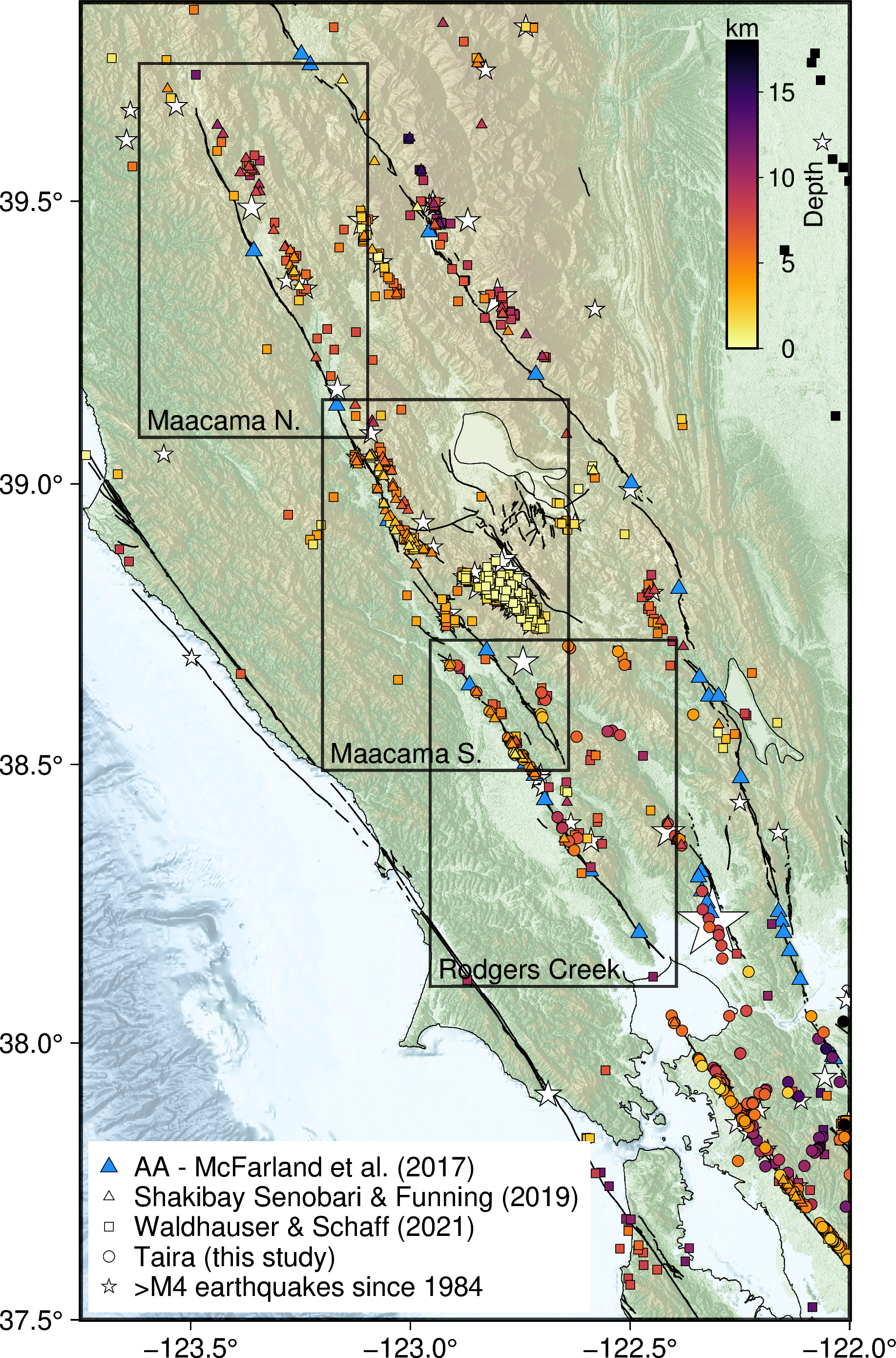Temporal and spatial creep variability – Detecting decadal changes in fault behavior in Northern California
Understanding where creep occurs and how creep rates change through time is integral to determining seismic potential and constraining future earthquake scenarios. We utilize an updated repeating micro-earthquake catalog and surface creep rates from recent radar satellite-based and terrestrial measurements to identify decadal-scale changes in fault behavior on the Calaveras, Hayward, Rodgers Creek, and Maacama faults in Northern California. We examine the interaction between moderate earthquakes and creep rates, specifically the interactions between the 2007 and 2022 magnitude M~5 Alum Rock earthquakes on the Calaveras and nearby repeating earthquake productivity. Along the northern segment of the Maacama Fault, we find partitioning of aseismic and seismic creep behavior and propose mechanisms that allow for this bimodal behavior. This work contributes to refining seismic hazard assessments by characterizing decadal-scale changes in fault dynamics.

